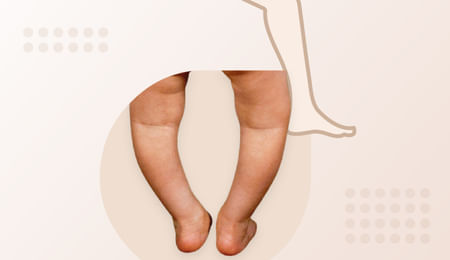Causes Of Rickets
Rickets is a bone disorder in children that leads to weak bones, muscle pain, and skeletal deformities. Today, nutritional rickets or rickets caused by the deficiency of Vitamin D, calcium, or phosphorus are the most common bone diseases affecting children. But other than this, rickets can be caused by genetics, drugs, or lack of mineralization.
These are the common types of rickets caused due to several deficiencies. These include:
1. Calcipenic rickets
This is the most common form of rickets, along with Vitamin D deficiency that is reported in children. This type of rickets develops due to a deficiency of calcium in the body. This can occur due to trouble in absorbing calcium seen in diseases such as celiac diseases.
2. Phosphopenic rickets
As the name suggests, this type of rickets is caused by the deficiency of phosphorus in your body. This can not only be due to low intake of phosphorus-rich food but also due to factors such as problems in phosphorus absorption by the intestine or high renal loss.
3. Vitamin D-dependent rickets
Vitamin D-dependent rickets is the most common type of rickets that children all over the world suffer from. This is the type of rickets caused by the deficiency of Vitamin D. This can be due to problems in the synthesis of Vitamin D, a defect in the Vitamin D receptor, low consumption of Vitamin D-rich food, and low exposure to sunlight.
4. Genetics
Other than the lack of nutrients in the body, rickets can also be genetic in nature. This is attributed to the genetic mutation of certain genes that stop the synthesis of Vitamin D in the body.
5. Familial hypophosphatemic rickets
This is the most commonly inherited form of refractory rickets, being inherited as X-linked dominant with variable penetrance. Sporadic instances are frequent and an autosomal recessive inheritance has also been reported. The gene responsible for X-linked hypophosphatemic rickets is termed as PHEX gene (phosphate regulating gene with homology to endopeptidases on the X chromosome)
6. Renal tubular acidosis (RTA)
Proximal or RTA are important causes of refractory rickets in children. The conditions are characterized by hyperchloremic metabolic acidosis with normal blood levels of urea and creatinine. Patients with proximal RTA may show low levels of phosphate, aminoaciduria (amino acids in the urine), and proteinuria (proteins in the urine). The use of bicarbonate and phosphate supplementation results in the healing of rickets.
7. Chronic kidney disease
Refractory rickets may occasionally be the presenting manifestation of chronic kidney disease. The features of the mineral bone disease depend on the patient's age and duration of disease. Elevated blood levels of creatinine, phosphate, and parathormone are characteristic. Therapy consists of restricting phosphate intake and providing supplements of calcium and active Vitamin D analogs.
8. Oncogenic rickets
Mesenchymal tumors may secrete fibroblast growth factors that result in phosphaturia (phosphates in urine), hypophosphatemia (low level of phosphorous), rickets, and muscle weakness.
9. Secondary to other diseases
-
McCune-Albright syndrome: It is a disorder in which the bones, skin and several hormone-producing (endocrine) tissues are affected.
-
Epidermal nevus syndrome: The presence of skin lesions known as epidermal nevi that are associated with additional extra-cutaneous abnormalities, affecting the brain, eye, and skeletal systems.
-
Dent's disease: It is a chronic kidney disorder that causes, kidney problems as a result of damage to the structures called proximal tubules.
